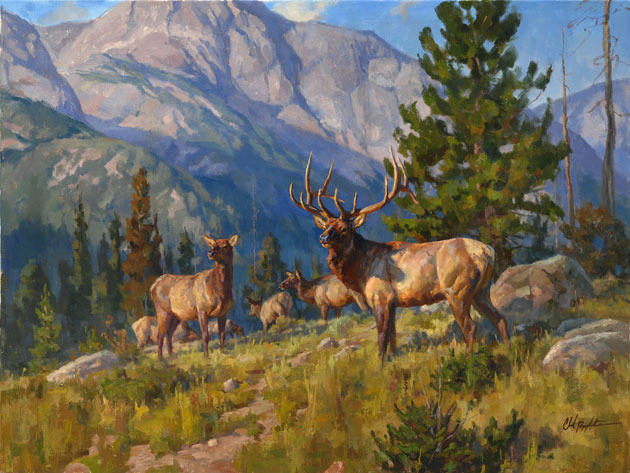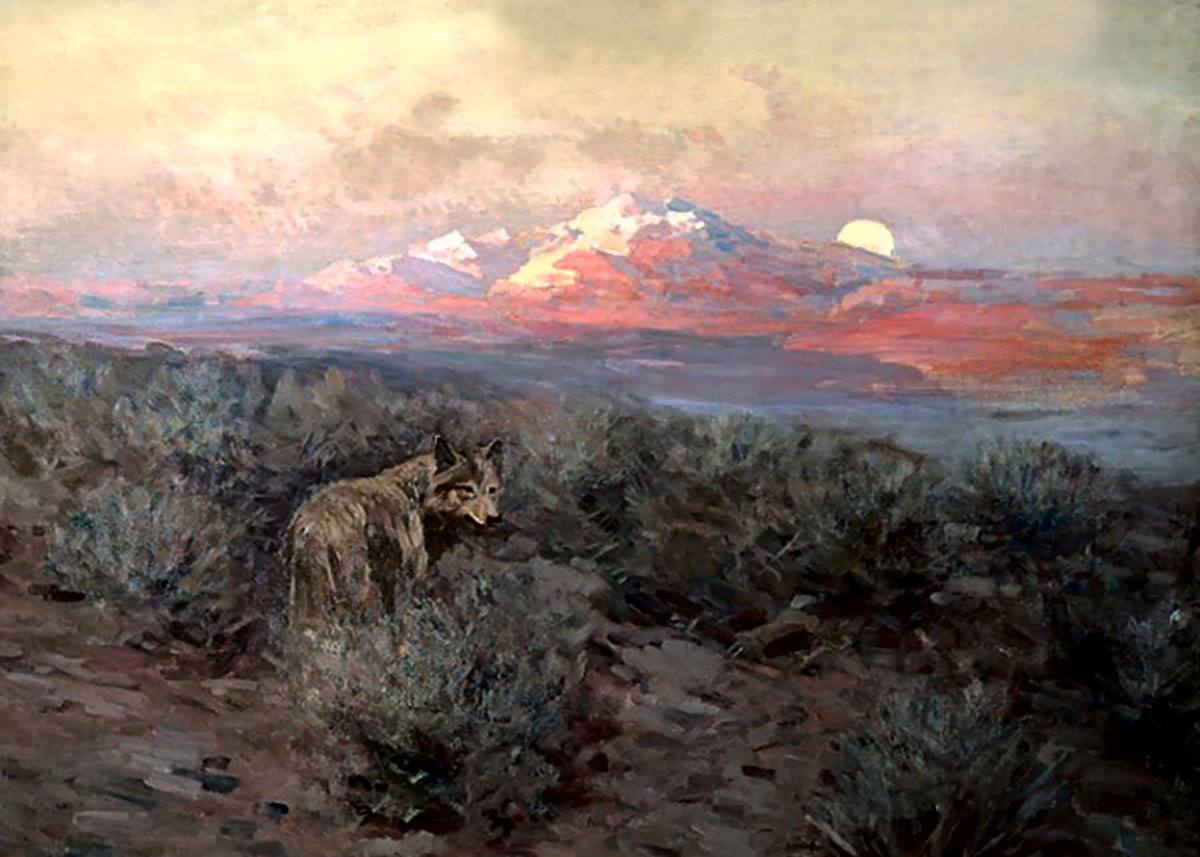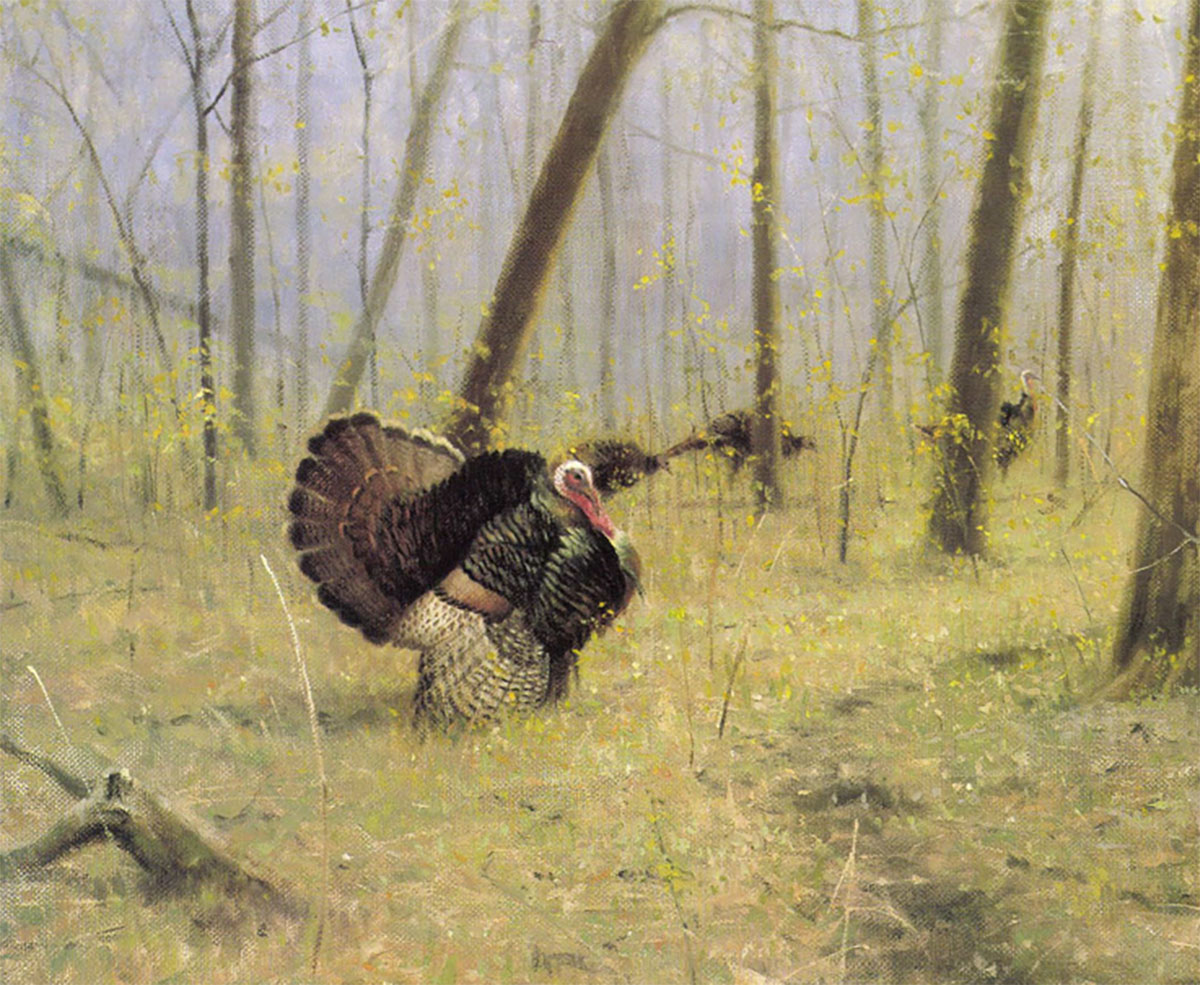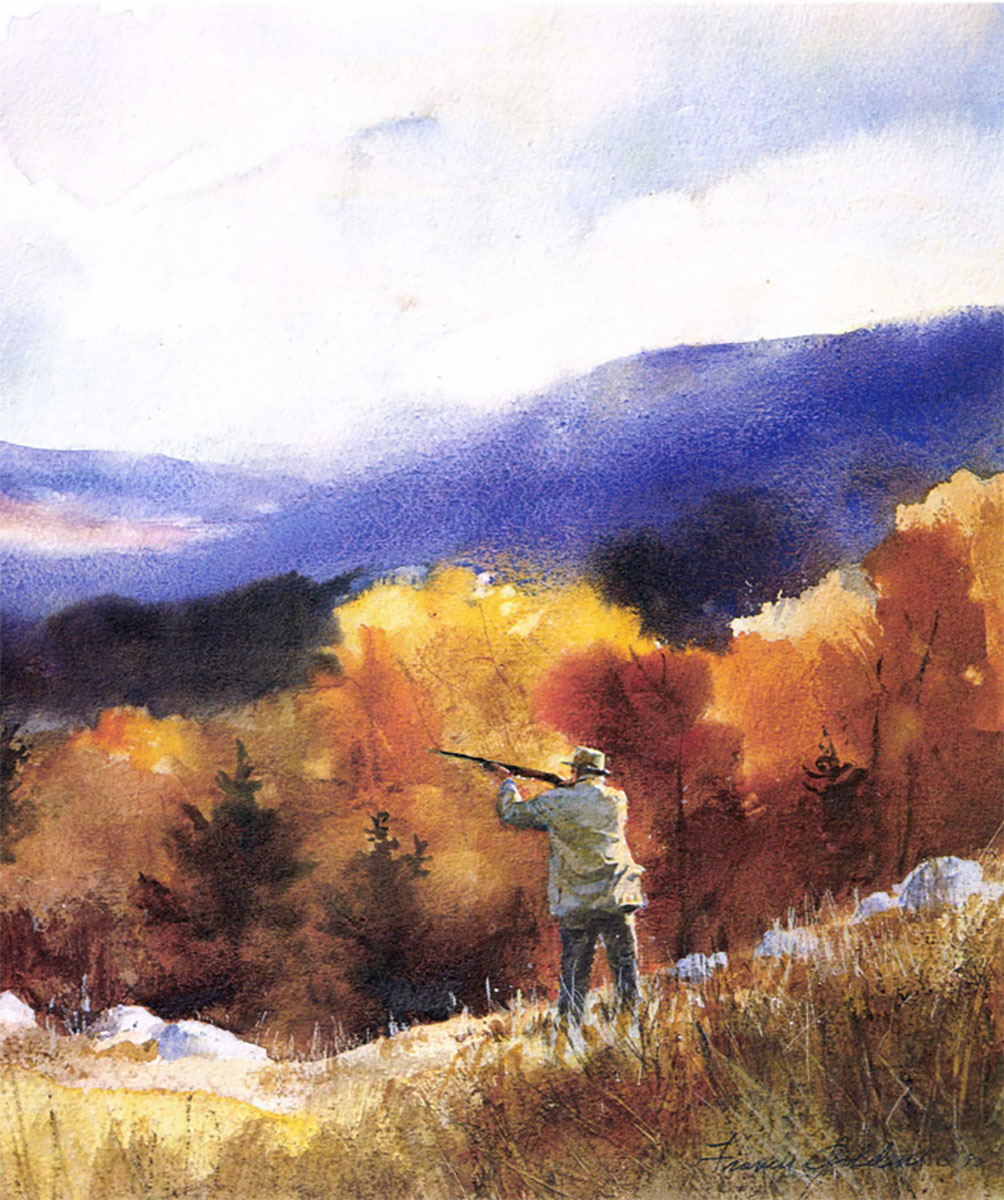Steve Sharkey is a self-admitted dweller. He’s spent his life traveling the world for business and pleasure. But in the fall there’s nothing he would rather be doing than hunting elk in the Teton Wilderness of northwest Wyoming.
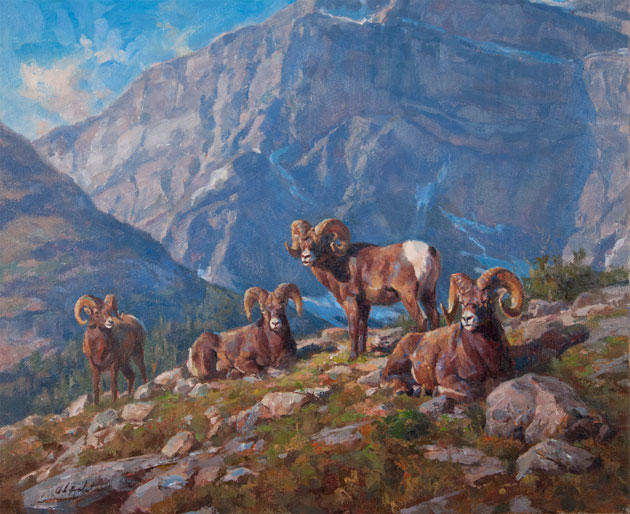 “I’m not interested in always pursuing a record-book animal,” he says. “One thing I like to do is dwell, waiting and searching for a nice bull. It gives me an opportunity to draw out the moment as long as I can . . . for the hunt to go on a little longer.”
“I’m not interested in always pursuing a record-book animal,” he says. “One thing I like to do is dwell, waiting and searching for a nice bull. It gives me an opportunity to draw out the moment as long as I can . . . for the hunt to go on a little longer.”
Sharkey values trophies as touchstones of his most memorable days in the field. Prominently displayed in the living room of his Jackson Hole home is the head mount of a mule deer and next to that, a 300-class bull elk standing majestically in front of his autumn harem.
The wapiti isn’t the handiwork of a taxidermist; it’s a massive 30×40-inch oil titled Wyoming Wilderness painted by Utah wildlife artist Chad Poppleton. Sharkey commissioned the scene because he, like a lot of collectors, regards Poppleton, 37, as one of the rising stars of modern sporting art.
“After I saw a painting of Chad’s featured in an ad for the Southeastern Wildlife Exposition, I looked around, visited galleries, and then I realized there are few artists who can do a better job of portraying elk,” Sharkey says.
Brad Richardson, owner and founder of Legacy Galleries, which has locations in Jackson, Wyoming, Scottsdale, Arizona, and Bozeman, Montana, says that Poppleton is following in the stylistic path blazed by Carl Rungius, the late Bob Kuhn, and Ken Carlson.
“While there are contemporaries who do a fine job of painting their subjects realistically, Chad strives to be more painterly,” Richardson explains. “He is more of an artist interpreting the spirit of an animal than a documentarian.”
Descended from Mormon pioneers who came west in 1850, Poppleton subscribes to an observation made by French writer Andre Gide: “Art is a conversation between God and the artist, and the less the artist does, the better.” Indeed, Poppleton believes that in his art he is simply channeling the grandeur of earthly creation.
A lifelong hunter and fisherman, Poppleton was raised on farms and ranches near Logan, Utah, where he worked cattle via horseback. Following in the footsteps of his artist father, he aspired to become a professional painter while just a teenager. At Utah State University he took painting and drawing classes and studied the works of great sporting artists that often decorated the pages of hook-and-bullet magazines. During his 20s he started seeing his work juried into prestigious shows.
“I’m obviously a student of classical big-game painting but I’ve always loved the fishing and adventure scenes of artists such as Ogden Pleisner and Chet Reneson because they put you, the viewer, into the center of the action.”
Living in the Cache Valley surrounded by 10,000-foot peaks in the northern Wasatch Range, Poppleton often follows the mountains northward to reach Yellowstone National Park a few hundred miles away. Every journey is a research trip that enables him to gather impressions for his paintings of grizzlies, mule deer, elk, and pronghorn antelope.
Martin F. “Bubba” Wood of Dallas is the founder of Collector’s Covey, one of the leading sporting art galleries in America. Wood features Poppleton’s work in his miniature show every November.
 Wood believes that the greatest challenge facing talented young artists today is that they settle upon what works and then stop challenging themselves and growing. “How many artists have we seen who get a taste of success and start to do the same painting over and over again until it looks like their creativity has started to die? Wood asks. “As an artist, if you’re ever comfortable, you’re stuck in the wrong place.”
Wood believes that the greatest challenge facing talented young artists today is that they settle upon what works and then stop challenging themselves and growing. “How many artists have we seen who get a taste of success and start to do the same painting over and over again until it looks like their creativity has started to die? Wood asks. “As an artist, if you’re ever comfortable, you’re stuck in the wrong place.”
Poppleton, he says, is obviously hungry. He refuses to be redundant.
“He’s still young but he’s already got a distinctive style that’s recognizable from across a room. I think he’s got a great career in front of him because he seems to approach each new work as if he wants it to be the best that he’s ever painted. What’s more, he’s willing to receive honest criticism and never settle on doing only what’s easy.”
Richardson, like Wood, has bet on many young artists to succeed but only a select few pan out.
“It’s fun to see painters and sculptors living up to their potential,” he says. “Chad is living up to his promise, and he’s on track to one day assert his own place with the old legends that he admires. His paintings from month to month seem to improve and come together a little quicker.
“There’s a vibe of spontaneous energy to his paintings,” Richardson adds. “A labored painting is usually filled with struggles that you can see. He is growing by leaps and bounds.”
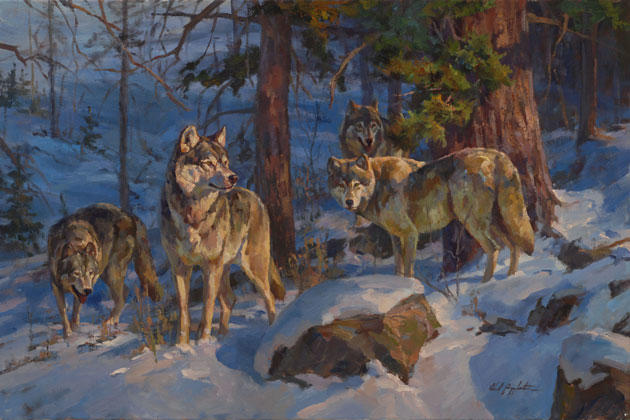 With his trademark good humor, Poppleton describes his studio as “a controlled mess.” Scattered throughout is reference material, art books, and correspondence. At any one time, he may have six paintings on easels in various stages of completion.
With his trademark good humor, Poppleton describes his studio as “a controlled mess.” Scattered throughout is reference material, art books, and correspondence. At any one time, he may have six paintings on easels in various stages of completion.
“Interpreting the behavior and character of each animal is a motivation for my work,” Poppleton notes. “I want to portray my subjects at their best, not at their average.”
Sharkey, a Coloradan who spent part of his youth as a guide in Zambia, says that he didn’t commission Poppleton to try and recreate any of his elk hunts in exacting detail. He enlisted the artist to take on a far more difficult task than simply conveying a mood.
“Chad sent me four different sketches. He included me in the artistic process which I really appreciate,” Sharkey explains. “The painting he delivered has a mountainous backdrop that could be any of the places where I love to hunt. The elk that live in remote wilderness around the Yellowstone region just have a different look in the way they carry themselves. You know it when you see it, and Chad captured it.”
Poppleton has an uncanny ability to convey that magical ambiance of being outdoors we hunters savor—the colors and shadowlight that come later in the year; the chill in the air and scent of sun-dried grass and leaves that heightens the senses; the twitching moment of expectation that follows the wait, when the calm is broken by a rustle; and then the emergence of pure wildness moving out of the woods.
It’s that kind of feeling that Poppleton is so adept at communicating, Sharkey says.
I have written about wildlife artists for more than 25 years, and the distinction I would apply to Poppleton is his astounding improvement in painting technique.
 “Whether he’s in pursuit of his own elusive animal or carrying a paint box into the backcountry, it’s having that intimate connection to nature that comes through in his paintings,” Richardson says. “Chad knows that every elk isn’t a 400-point bull. If you only paint giant 400-point bulls, you won’t have a lot of credibility with sportsmen.
“Whether he’s in pursuit of his own elusive animal or carrying a paint box into the backcountry, it’s having that intimate connection to nature that comes through in his paintings,” Richardson says. “Chad knows that every elk isn’t a 400-point bull. If you only paint giant 400-point bulls, you won’t have a lot of credibility with sportsmen.
“Most hunters believe it’s the experience itself that lives larger than life. Only artists who are, or have been hunters realize that when you’re pursuing the experience and not a trophy, then you’re capable of creating something that really is timeless.”
Editor’s Note: this article originally appeared in the 2014 Nov./Dec. issue of Sporting Classics.
 Finishing the final book in the iconic Legends series, Legendary Hunters and Explorers is the epitome of Sir John Seerey-Lester’s spirit. Filled with over 120 paintings and 45 descriptive chapters, the new 200-page book relives the compelling stories of 25 acclaimed hunters and explorers.
Finishing the final book in the iconic Legends series, Legendary Hunters and Explorers is the epitome of Sir John Seerey-Lester’s spirit. Filled with over 120 paintings and 45 descriptive chapters, the new 200-page book relives the compelling stories of 25 acclaimed hunters and explorers.
Amid his fight against cancer, Sir John Seerey-Lester was working tirelessly on his final book of the Legends series, Legendary Hunters and Explorers, when he passed away in May of 2020. He is survived by his wife and fellow artist, Suzie Seerey-Lester, who carries his torch with vigor and pride. Buy Now

